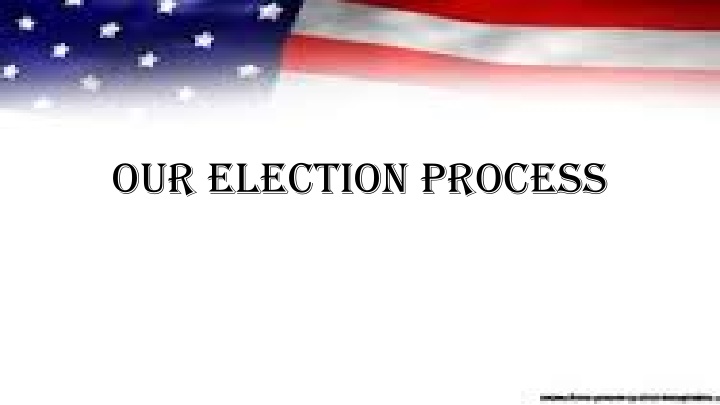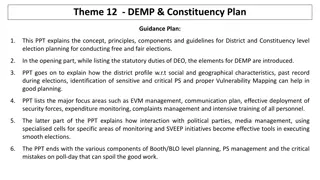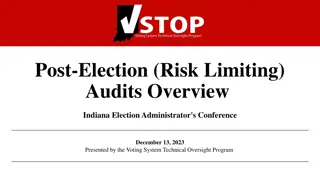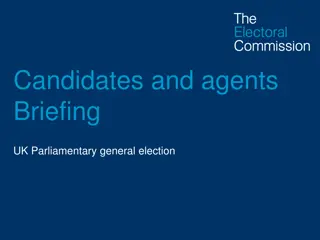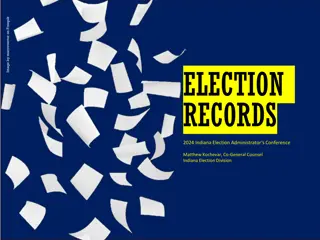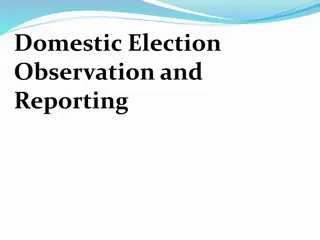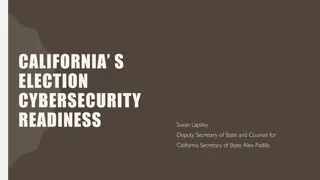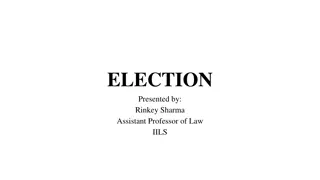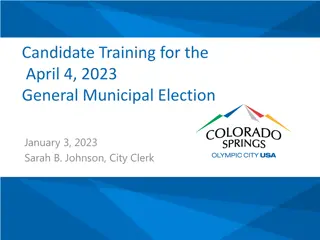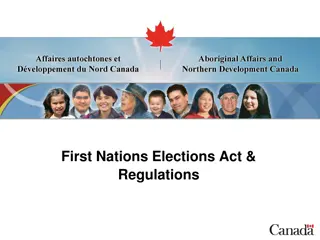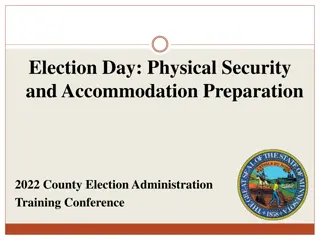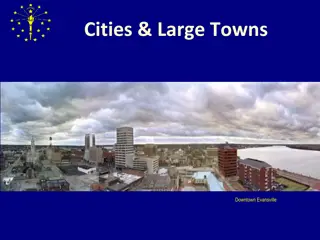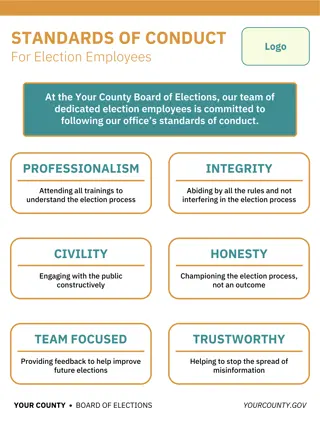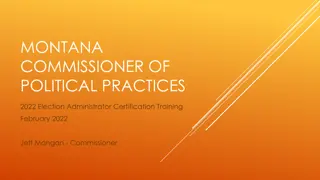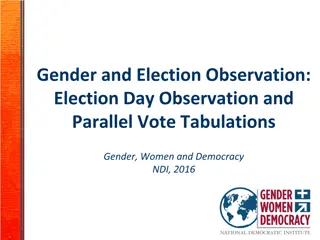The Evolution of the U.S. Election Process
Explore the historical journey of the U.S. election process from the creation of political parties to the expansion of voting rights. Learn about the roles of Democrats, Republicans, and the electoral system in shaping American democracy. Understand the intricacies of general and primary elections, as well as the presidential election process steps. Delve into the significance of political party beliefs and how elections work at various levels in the United States.
Download Presentation

Please find below an Image/Link to download the presentation.
The content on the website is provided AS IS for your information and personal use only. It may not be sold, licensed, or shared on other websites without obtaining consent from the author.If you encounter any issues during the download, it is possible that the publisher has removed the file from their server.
You are allowed to download the files provided on this website for personal or commercial use, subject to the condition that they are used lawfully. All files are the property of their respective owners.
The content on the website is provided AS IS for your information and personal use only. It may not be sold, licensed, or shared on other websites without obtaining consent from the author.
E N D
Presentation Transcript
We Begin- The elecTion of1800 Federalist Party VS Democratic-Republican John Adams Thomas Jefferson Thomas Jefferson WINS This was the creation of the PARTY system in the United States
As Time goes bye More and more Americans are allowed to vote. The 15thAmendment- gave African American men the right to vote. The 18thAmendment- gave women the right to vote.
Political parties democrats democrats republicans republicans
Political parties What do they believe? Go to page 598-599 in your CIVICS text and fill in the chart on your worksheet.
How do elections work? General Elections Voters make final decisions about the candidates and issues . Primary Elections Voters nominate candidates for the general election Everyone votes for who they want. Republicans vote for Republicans Democrats vote for Democrats
How do elections work? General elections are used on the national level to decide the President of the United States. They are also used on the state level to decide elections of officials or issues
The Presidential Election process Step 1 Presidential Requirements 1- NATURAL BORN CITIZEN 2- MINIMUM 35 YEARS OF AGE 3- US RESIDENT FOR 14 YEARS
The Presidential Election process Step 2 PRIMARY-A vote in a state to determine who will represent the party in the upcoming election. (AZ, OK, etc.) CAUCUSES- Like a town meeting where members of a party discuss who will represent them in the upcoming election. ( CO, ND, etc.) PRIMARY ELECTION & CAUCUSES Candidates from each political party campaign throughout the country to win the favor of their party members
The Presidential Election process Step 3 NATIONAL CONVENTIONS Each party holds a convention to select a final Presidential nominee. The Presidential candidate then chooses a running mate (Vice-President)
The Presidential Election process Step 4 GENERAL ELECTION & POPULAR VOTE People in every state across the country vote for the president. When people cast their vote they are actually voting for a group of people known as ELECTORS.
The Presidential Election process Step 5 ELECTORAL COLLEGE In the electoral college system each state gets a certain number of electors based on its representation in congress. Representatives + Senators=Electoral votes Each elector casts one vote following the general election, and the candidate who gets more than half (270) wins.
